Written By
OKLR Members
Published
01/10/2025
October 2025 Newsletter
Volunteers Needed
The railway is always looking for new volunteers to help with the maintenance and operation of the railway. If you are interested in getting involved, please check out the volunteering page on our website.
We would be happy to welcome anyone who is interested in helping out, whether you have experience in the railway industry or not. We have a wide range of roles available, from driving the trains to maintaining the track and buildings.
A Volunteer's Perspective - Tim
Due to a dry summer, the decision was made to suspend the use of steam engines to prevent fires, as the railway is almost totally surrounded by trees and fragile wooden buildings. This decision proved wise, as a number of wildfires occurred in the local area throughout the summer months. As a result, our summer running days were handled by the diesel fleet, even during the busy fire engine day at the museum when many appliances were on hand to put out any fires.
Generally, the more "modern" Hunslet locomotives, Champion and Wey Valley, were used—"modern" being a relative term, as they were built in 1971. On some days, "heritage" diesel traction was used instead, including the newly returned-to-service Simplex MR 8981, Ruston Red Dwarf, and on occasion, the historic Baguley Altonia, a rare treat!
Away from the railway, working parties spent the summer recovering track components from a now-closed private railway. These parts will be brought to the railway for use in future projects.
Although it was not possible to fire up our steam locomotives, we were able to fire up the barbecue for after-hours socials. These were a great way to spend the evening, surrounded by the railway's locomotives, enjoying food, drink, and good company.
The summer season culminated in the museum's 'Steam at Work' event in early September. After a spell of wet weather to dampen the ground, we were able to run our steam locomotives, and railway steam could truly be seen at work! Both of our operational locomotives, Elouise and Emmet, were in use on an intensive service along with the diesel Altonia in support—it looks like a steam loco!
As a treat for this particular volunteer on his birthday, he was given a locomotive driving lesson after the main service for the day was over. The Hunslet Wey Valley was used, and after some runs in the yard to get the feel of things (it has a reassuringly strong hand brake), runs up and down the line were carried out. This was great fun and another benefit of volunteering at the OKLR!
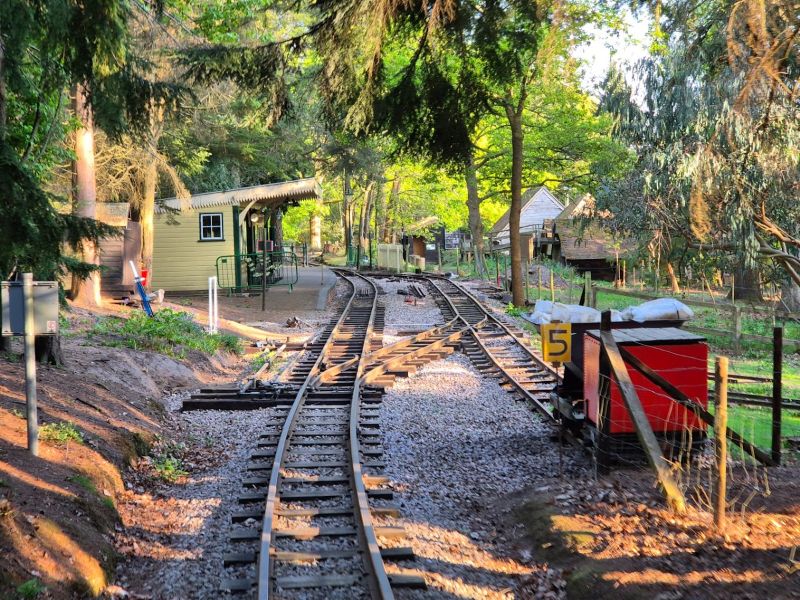
A Volunteer's Perspective - Josh
Volunteering at the Old Kiln Light Railway has been an incredibly rewarding experience. Since I joined in 2023, I have been welcomed into a community of passionate people who share a love for railways and history. The hands-on experience of working on the locomotives and maintaining the tracks has been both educational and enjoyable.
One of the highlights of my time at the railway has been participating in special events, such as the Fire Engine Rally and 'Steam at Work.' These events not only bring joy to visitors but also provide an opportunity for volunteers to showcase their skills and dedication. The camaraderie among volunteers during these events is truly special as we work together to ensure everything runs smoothly.
Beyond the technical aspects, volunteering has allowed me to develop new skills and gain a deeper understanding of railway operations. I've learned about operating procedures, safety protocols, and the intricacies of locomotive mechanics. This knowledge has been invaluable and has sparked a greater appreciation for the work that goes into preserving and operating heritage railways.
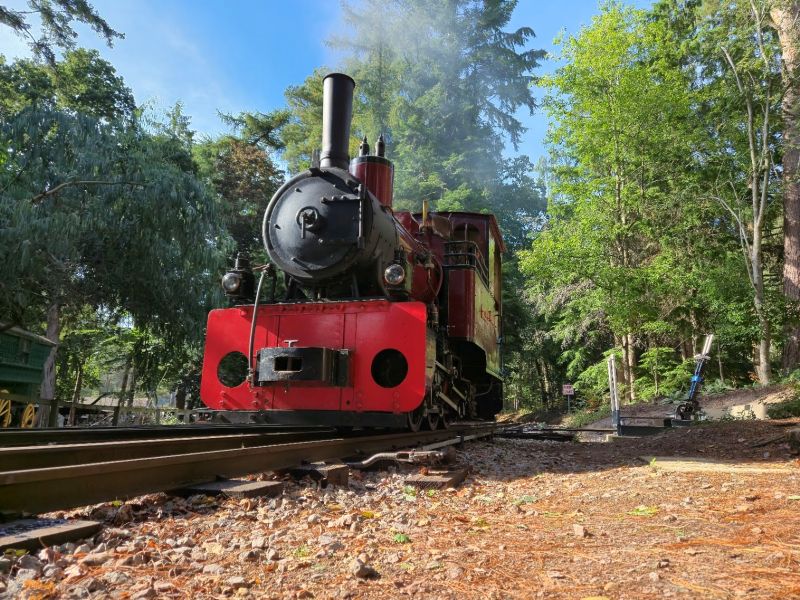
Steam at Work ft. the Farnham Brass Band - Tom
In 2025, Farnham Brass Band turns 50, and what better way to celebrate than a visit to the Old Kiln Light Railway!
On Saturday, September 6th, during the Rural Life Living Museum's 'Steam at Work' event, Farnham Brass Band played an assortment of classic tunes for the crowd before joining the train at Mills Wood. As the train traveled around the museum, they played the (very appropriate) theme to 'Thomas the Tank Engine' and the classic march "Slaidburn." Videos of the performance can be found on their YouTube channel, and they would be delighted for you to join them for their 50th Anniversary Concert at the Medici Theatre (at Weydon School in Farnham) at 2 p.m. on Saturday, October 11th.
Links to the YouTube Videos: Video 1 | Video 2
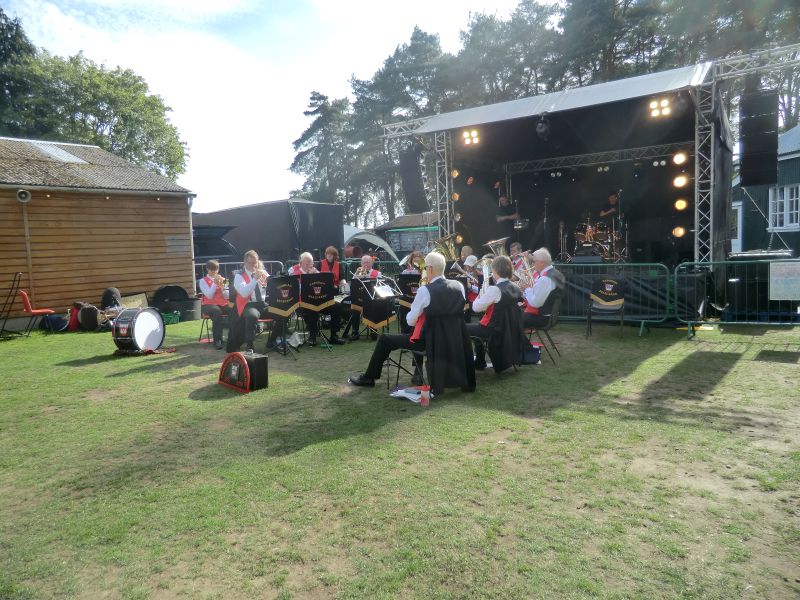
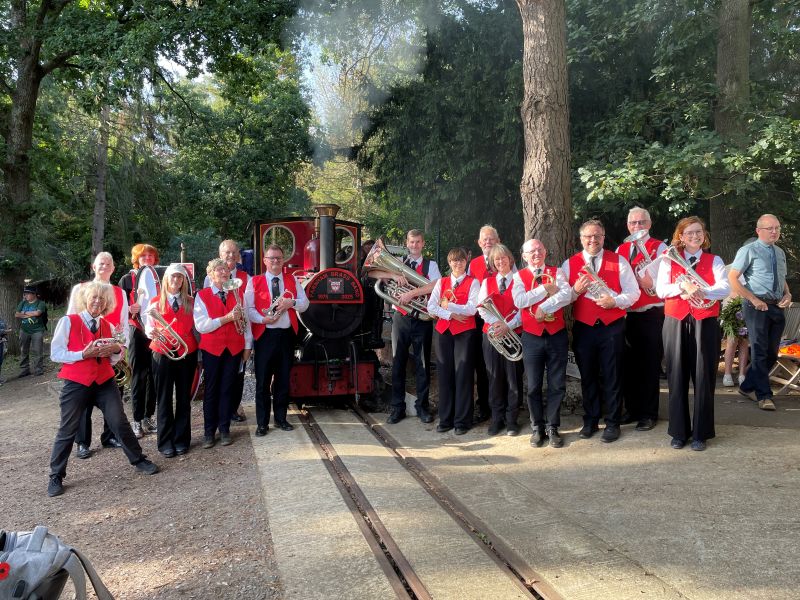
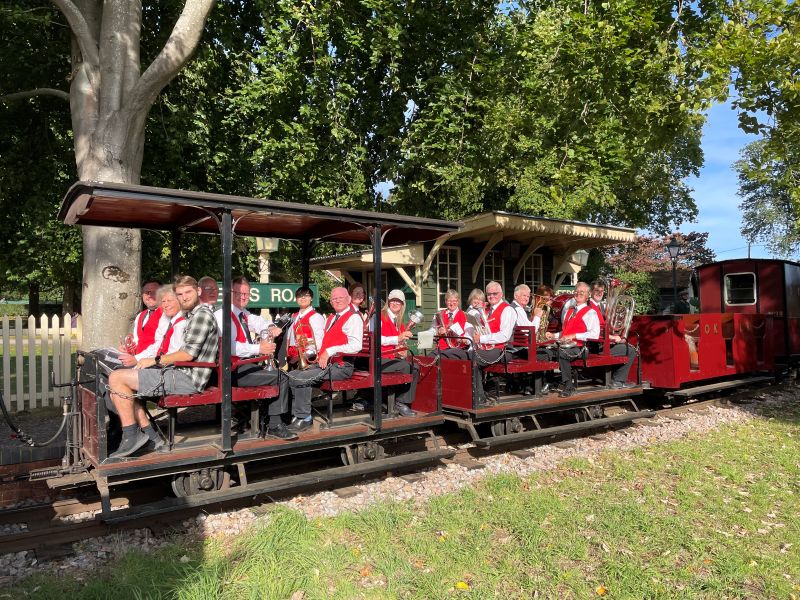
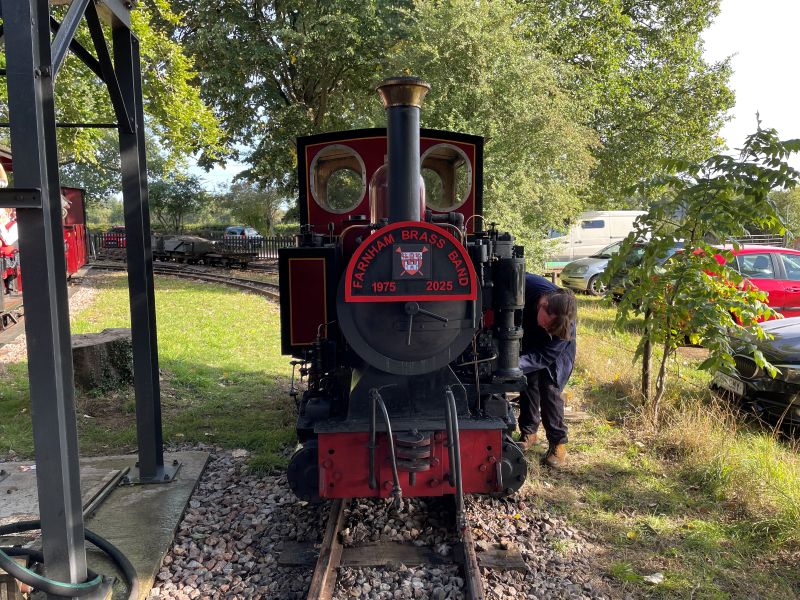
9655 Bluey Update - Alex
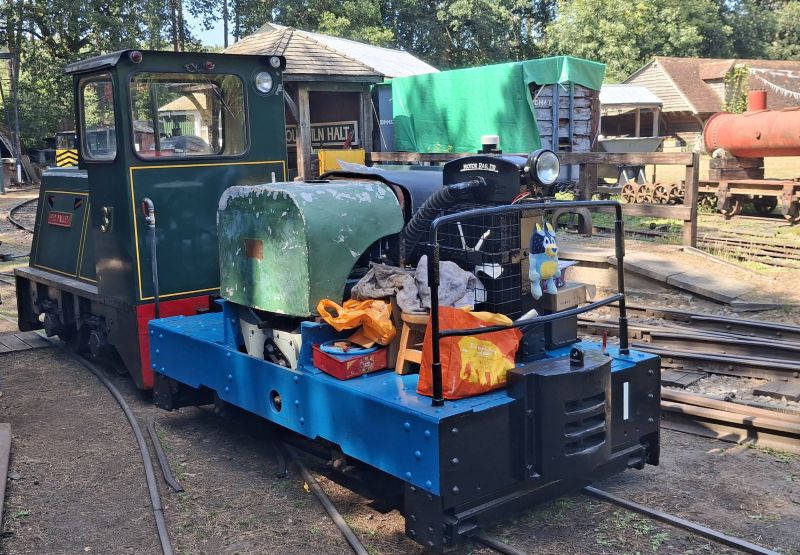
Since the last update a little more progress has been made on 9655’s engine rebuild.
During reassembly a crack was discovered in the lower half of the crankcase. This was a major problem, as the crack had developed around one of the studs and had started to spread up the arch of the main oil seal.
A number of options were explored, from cast iron welding to engine replacement. Eventually I settled on a cold repair using a product called Belzona.
The crack was drilled and pinned at each end, then a vee shape ground along its length and the Belzona repair compound applied both sides of the crack. The repair isn't pretty, but it should be good enough for the use it’ll get here.
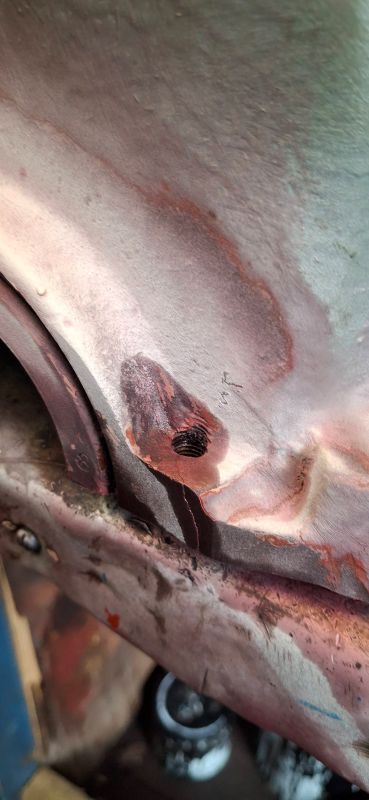
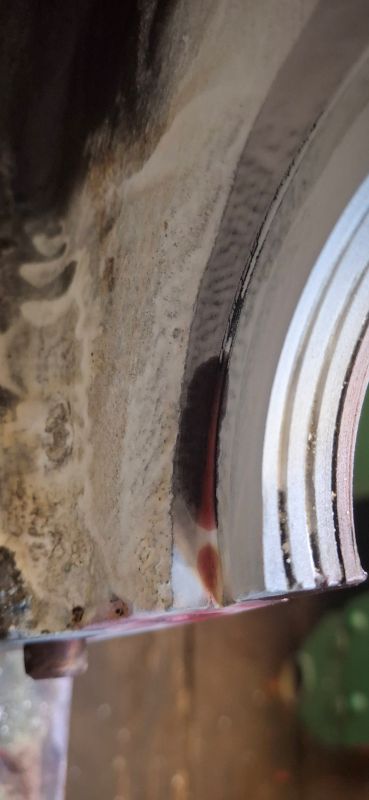
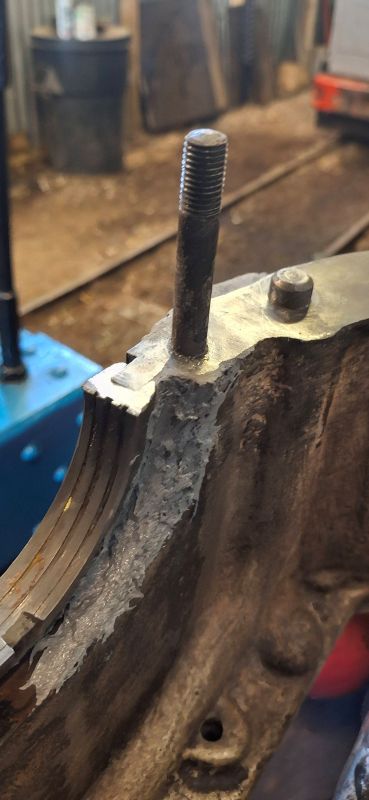
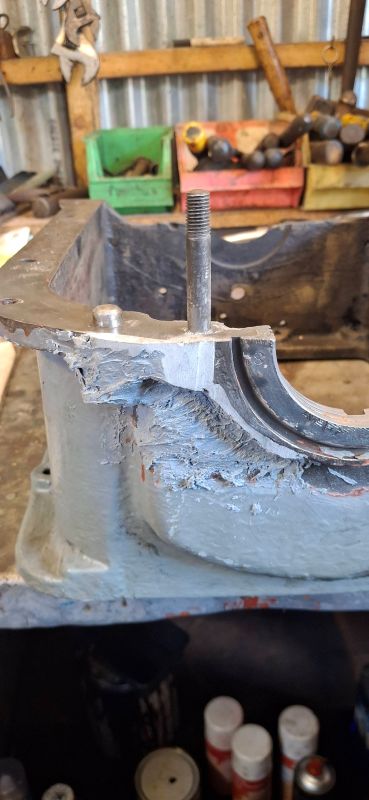
Engine reassembly progress has since somewhat stalled due to the cam followers. The poor condition of these were the reason the engine was initially taken apart. However even after a considerable amount of asking around I’ve only been able to source a single follower, which leaves another 3 to source. Various options for getting them made have been explored, most of which haven't been successful yet. Hopefully a breakthrough will be achieved with these soon. I've used the downtime on engine reassembly to source a few more parts for the clutch rebuild, and have started to explore repairs to the bonnets.
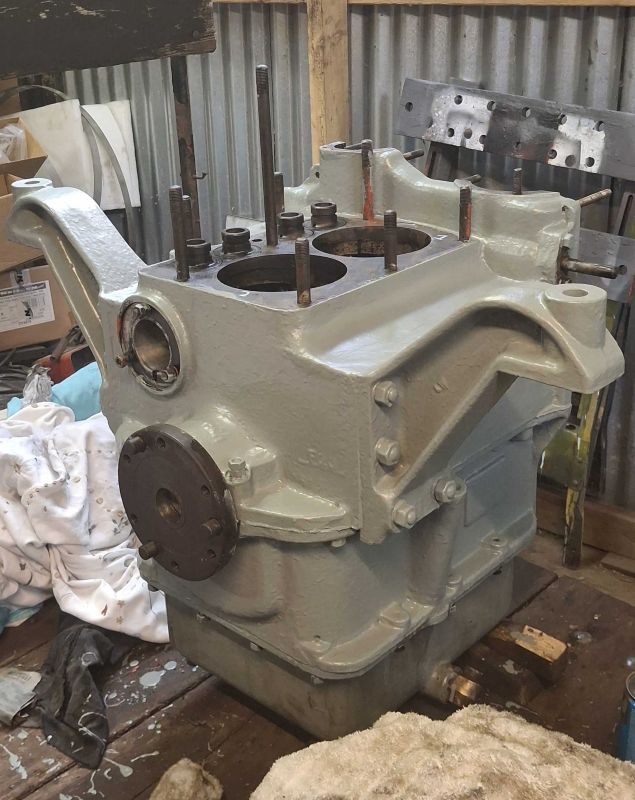
5713 - James
The overhaul of 5713 has continued slowly, with the individual components being inspected, cleaned, assessed, repaired as needed, and repainted.
The weights have been cleaned after a lot of dirt built up between them and the frames. The original bolts that hold the weights onto the chassis had also rusted in place and stretched, requiring some persuasion to remove. The weights are now in undercoat, awaiting the chassis to be done so they can be glossed at the same time.
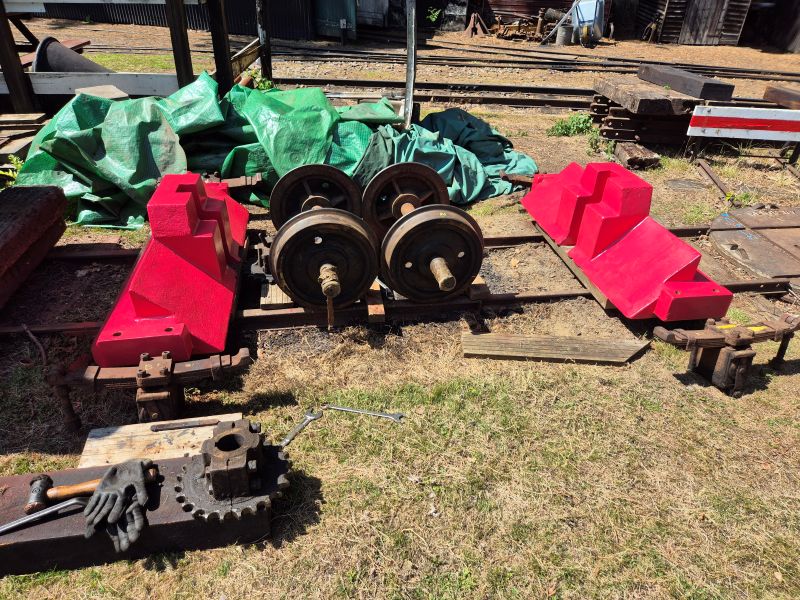
The wheels and axles have been cleaned, and a ring test confirmed they were sound. They have been painted with a gloss coat, and no real work was required. The axle ends are taped in denzo tape to prevent rust formation while the axle boxes are being worked on.
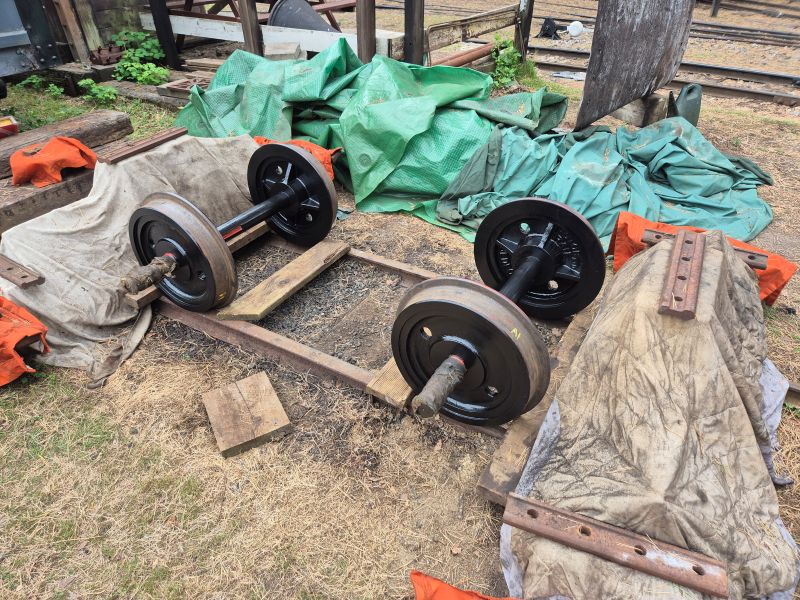
The axle boxes required a little more work, with the spring assemblies also being inspected. This process found a few seized securing nuts that will be replaced and very little to no lubrication on the spring leaves, which caused one leaf to fail. These are all being rectified and reassembled with copious amounts of black moly grease between the spring leaves. New pins are also being made, and the threads on the adjusting pins, which hold the axles onto the chassis, are being cleaned. The axle box brasses will also need to be replaced due to poor axle alignment in the past, causing them to wear improperly and become very thin in places. These are in stock and awaiting machining.
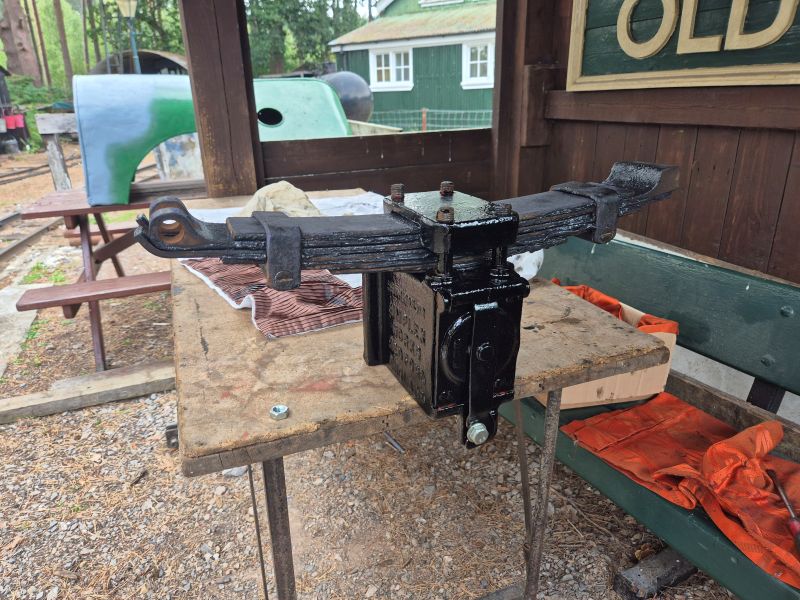
Work has also started on the brakes, which will need some of the original casting holes to be made round again. This will be trialed using cold weld techniques due to the limited material left to drill and bush these components.
Coupling blocks have had a coat of paint applied, as have the buffer springs. One of the springs has a crack that will need to be replaced in due course. There is significant wear in the spring slots, so these will need to be attended to before they are put back on the locomotive.
The chassis has been sent away to be sandblasted. This will remove all previous layers of paint and rust and create a suitable working environment. As soon as the chassis was back on site, work started to stop it from rusting again using rust inhibitors and red oxide paint. Work will now continue on the chassis to re-weld some cracks where previous welds have broken and to fix some elongated holes where the spring buffer goes in the chassis.
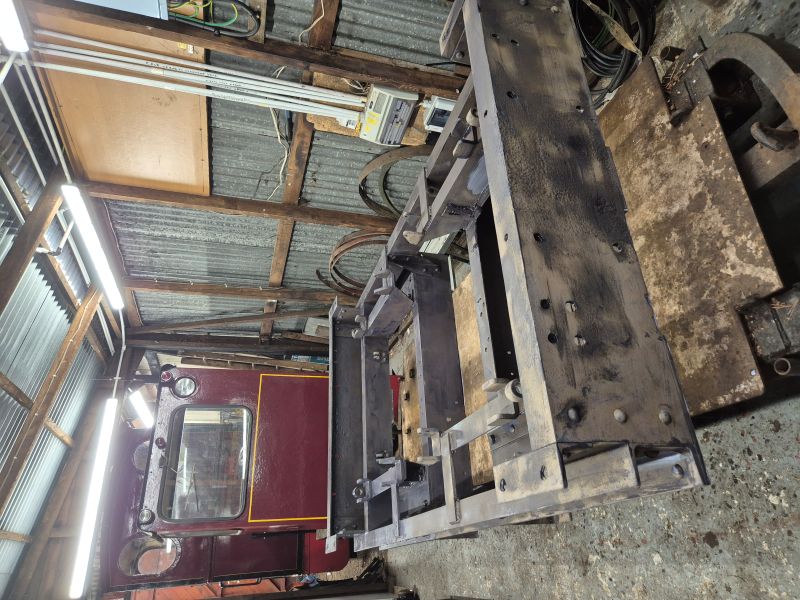
Work has also been progressing with the engine rebuild. This is being done by an external company due to the nature and age of the engine. So far, it has been fully stripped down and assessed. Given its age, the engine is not in the best condition and will need a lot of attention to get it running correctly. The option of re-engining the locomotive was considered; however, this would cause it to lose its character and a vast amount of its history. As such, the owning group has decided to press on with the original engine and use the locomotive sparingly.